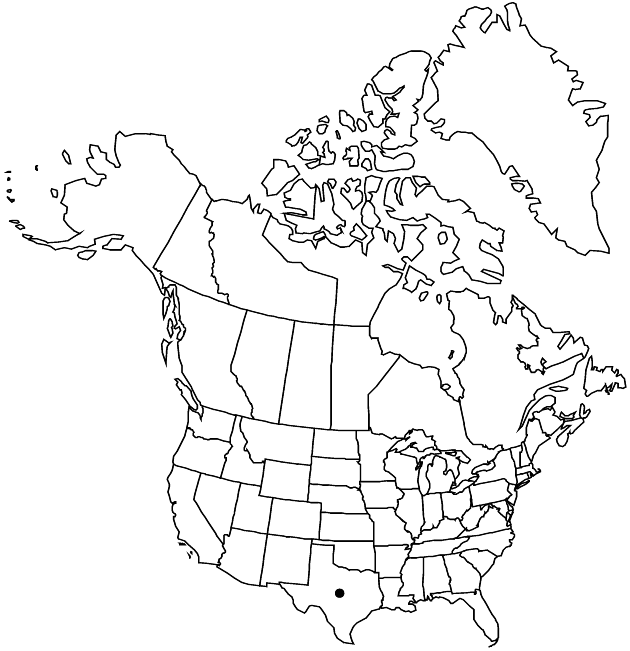Gaillardia coahuilensis
SouthW. Naturalist 21: 539. 1977.
Annuals, 20–80 cm. Leaves basal and cauline; petiolar bases 0–3+ cm; blades ovate to lanceolate, 3–8 cm × 5–25 mm, (bases of distal usually clasping) margins of proximal often lobed or toothed, of distal usually entire, rarely lobed, faces sparsely hispidulous. Peduncles 5–20 cm. Phyllaries 14–22, lanceolate-acuminate to lanceolate-attenuate, 5–12+ mm, closely hispidulous strigillose, not ciliate with jointed hairs. Receptacular setae 2–4 mm. Ray florets 5–13; corollas proximally reddish or orange to yellow, distally orange to yellow, 10–20 mm. Disc florets 40–100+; corollas proximally yellow or reddish, distally reddish or yellow, tubes 0.6–1 mm, throats campanulate, 3–4 mm, lobes deltate, 1–1.2 mm, jointed hairs to 0.3 mm. Cypselae obpyramidal, 1–3 mm, hairs 1–3 mm, inserted at bases; pappi of 8–9 ovate to lanceolate, aristate scales 2–5+ mm (scarious bases 1–2.5 × 0.4–1 mm). 2n = 34.
Phenology: Flowering Apr–Jun.
Habitat: Calcareous soils
Elevation: 300–1200+ m
Distribution

Tex., Mexico (Coahuila).
Discussion
Specimens of Gaillardia coahuilensis were earlier treated as members of G. mexicana A. Gray, a Mexican species. Plants of G. coahuilensis seem much closer to G. pulchella than to G. mexicana in most attributes and might be included within the circumscription of G. pulchella but for the short hairs on the corollas.
Selected References
None.